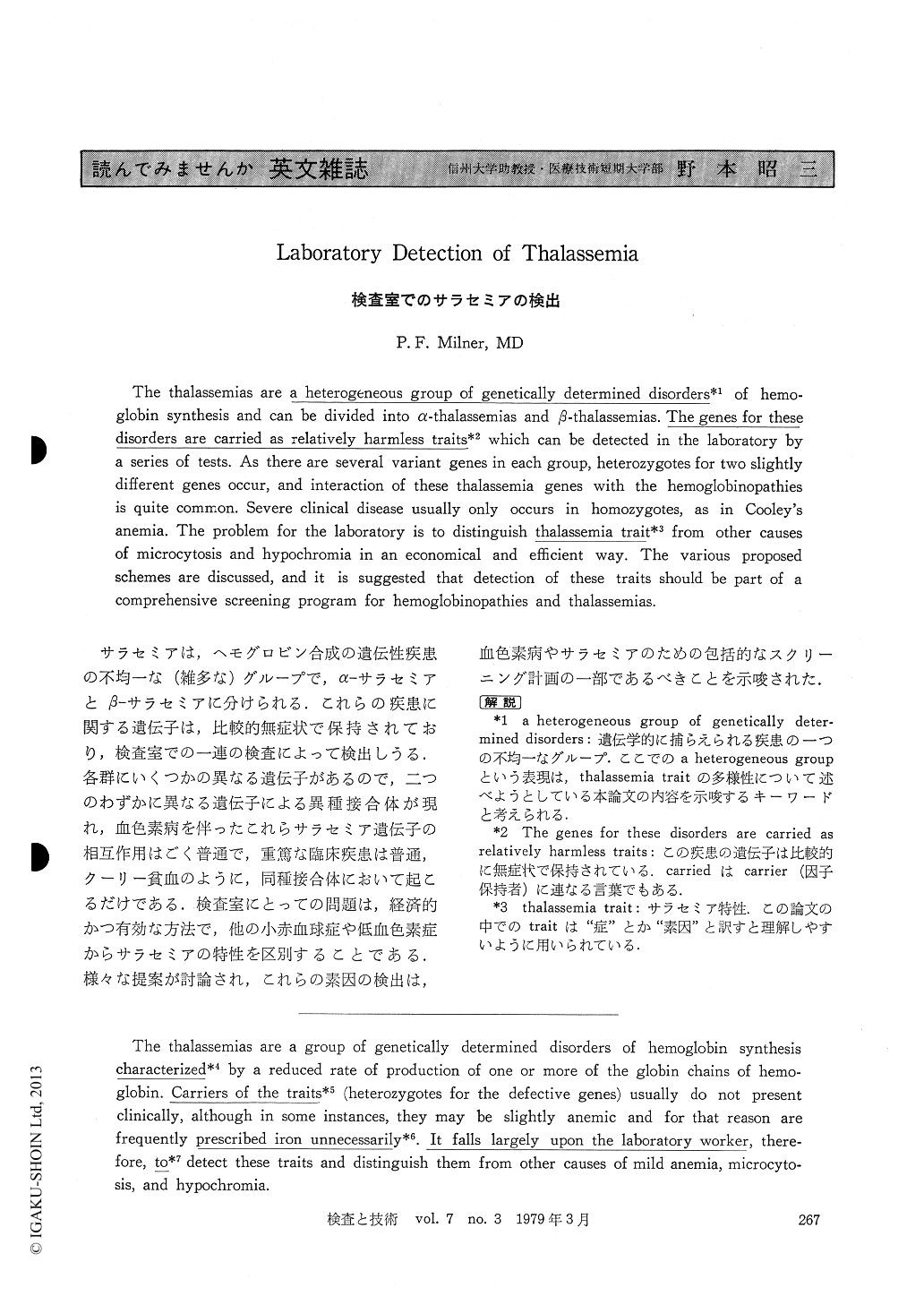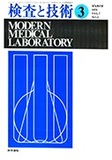Japanese
English
- 有料閲覧
- Abstract 文献概要
- 1ページ目 Look Inside
サラセミアは,ヘモグロビン合成の遺伝性疾患の不均一な(雑多な)グループで,α-サラセミアとβ-サラセミアに分けられる.これらの疾患に関する遺伝子は,比較的無症状で保持されており,検査室での一連の検査によって検出しうる.各群にいくつかの異なる遺伝子があるので,二つのわずかに異なる遺伝子による異種接合体が現れ,血色素病を伴ったこれらサラセミア遺伝子の相互作用はごく普通で,重篤な臨床疾患は普通,クーリー貧血のように,同種接合体において起こるだけである.検査室にとっての問題は,経済的かつ有効な方法で,他の小赤血球症や低血色素症からサラセミアの特性を区別することである.様々な提案が討論され,これらの素因の検出は,血色素病やサラセミアのための包括的なスクリーニング計画の一部であるべきことを示唆された.
The thalassemias are a heterogeneous group of genetically determined disorders*1 of hemoglobin synthesis and can be divided into α-thalassemias and β-thalassemias. The genes for these disorders are carried as relatively harmless traits*2 which can be detected in the laboratory by a series of tests. As there are several variant genes in each group, heterozygotes for two slightly different genes occur, and interaction of these thalassemia genes with the hemoglobinopathies is quite common. Severe clinical disease usually only occurs in homozygotes, as in Cooley's anemia. The problem for the laboratory is to distinguish thalassemia trait*3 from other causes of microcytosis and hypochromia in an economical and efficient way. The various proposed schemes are discussed, and it is suggested that detection of these traits should be part of a comprehensive screening program for hemoglobinopathies and thalassemias.

Copyright © 1979, Igaku-Shoin Ltd. All rights reserved.


